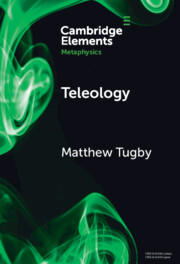Refine search
Actions for selected content:
46 results
Chapter 10 - Vicarious Life Stories
- from Part II - How the Environment of Autobiographical Memory Shapes the Life Story
-
-
- Book:
- Autobiographical Memory and the Life Story
- Published online:
- 20 November 2025
- Print publication:
- 04 December 2025, pp 196-220
-
- Chapter
- Export citation

Marketing Channel Management
- Organization and Coordination
-
- Published online:
- 26 November 2025
- Print publication:
- 04 December 2025
-
- Textbook
- Export citation
3 - Functions
- from Part I - MATLAB Programming
-
- Book:
- Foundations of MATLAB Programming for Behavioral Sciences
- Published online:
- 28 October 2025
- Print publication:
- 07 August 2025, pp 36-47
-
- Chapter
- Export citation
10 - User-Defined Functions
- from Part I - MATLAB Programming
-
- Book:
- Foundations of MATLAB Programming for Behavioral Sciences
- Published online:
- 28 October 2025
- Print publication:
- 07 August 2025, pp 119-127
-
- Chapter
- Export citation

Teleology
-
- Published online:
- 31 August 2024
- Print publication:
- 27 June 2024
-
- Element
- Export citation
Appendix A - The R System: a Brief Overview
-
- Book:
- A Practical Guide to Data Analysis Using R
- Published online:
- 11 May 2024
- Print publication:
- 30 May 2024, pp 469-494
-
- Chapter
- Export citation
2 - Mathematical Terms and Notations
-
- Book:
- Mathematics for Economics and Finance
- Published online:
- 24 May 2024
- Print publication:
- 30 May 2024, pp 11-22
-
- Chapter
- Export citation
Chapter 6 - Resistance to Evidence as Epistemic Malfunction
- from Part II - Resistance to Evidence and Epistemic Proper Function
-
- Book:
- Resistance to Evidence
- Published online:
- 16 February 2024
- Print publication:
- 15 February 2024, pp 95-110
-
- Chapter
-
- You have access
- Open access
- HTML
- Export citation
Chapter 6 - The Relation between Matter and Form in Artefacts
-
- Book:
- Aristotle's Ontology of Artefacts
- Published online:
- 14 December 2023
- Print publication:
- 21 December 2023, pp 181-218
-
- Chapter
-
- You have access
- Open access
- HTML
- Export citation
Integrating Logic Rules with Everything Else, Seamlessly
-
- Journal:
- Theory and Practice of Logic Programming / Volume 23 / Issue 4 / July 2023
- Published online by Cambridge University Press:
- 06 July 2023, pp. 678-695
-
- Article
- Export citation
18 - The Depositary
-
- Book:
- Aust's Modern Treaty Law and Practice
- Published online:
- 13 April 2023
- Print publication:
- 06 April 2023, pp 333-345
-
- Chapter
- Export citation
13 - Arbitral Institutions
- from Part III - Stakeholders in Arbitration
-
-
- Book:
- Cambridge Compendium of International Commercial and Investment Arbitration
- Published online:
- 18 February 2023
- Print publication:
- 02 March 2023, pp 363-388
-
- Chapter
- Export citation
15 - States as Participants in International Arbitration
- from Part III - Stakeholders in Arbitration
-
-
- Book:
- Cambridge Compendium of International Commercial and Investment Arbitration
- Published online:
- 18 February 2023
- Print publication:
- 02 March 2023, pp 424-438
-
- Chapter
- Export citation
Chapter One - On Clichés
-
- Book:
- Talking in Clichés
- Published online:
- 27 October 2022
- Print publication:
- 03 November 2022, pp 1-9
-
- Chapter
- Export citation
4 - Verbal Silence
-
- Book:
- Silence as Language
- Published online:
- 18 August 2022
- Print publication:
- 25 August 2022, pp 248-333
-
- Chapter
- Export citation

Silence as Language
- Verbal Silence as a Means of Expression
-
- Published online:
- 18 August 2022
- Print publication:
- 25 August 2022
3 - A Framework for Institutional Analysis and a Typology of Institutions
- from Part I - On Institutions
-
- Book:
- Rule-Making Rules
- Published online:
- 16 June 2022
- Print publication:
- 30 June 2022, pp 77-116
-
- Chapter
- Export citation
13 - Article 13, Surveillance
-
- Book:
- WTO Agreement on Safeguards and Article XIX of GATT
- Published online:
- 19 May 2022
- Print publication:
- 16 June 2022, pp 334-347
-
- Chapter
- Export citation
1 - Foundations and Functions of International Law
-
- Book:
- German Practice in International Law
- Published online:
- 19 May 2022
- Print publication:
- 09 June 2022, pp 1-19
-
- Chapter
- Export citation
12 - Parliament (II): The House of Lords
- from Part III - Central Government in the United Kingdom
-
- Book:
- Constitutional and Administrative Law
- Published online:
- 19 May 2022
- Print publication:
- 02 June 2022, pp 387-412
-
- Chapter
- Export citation
